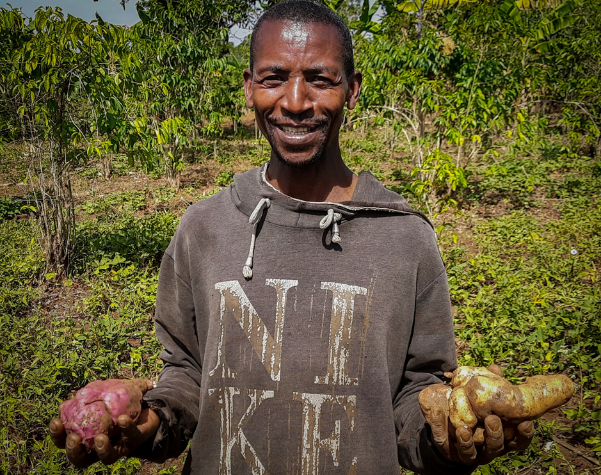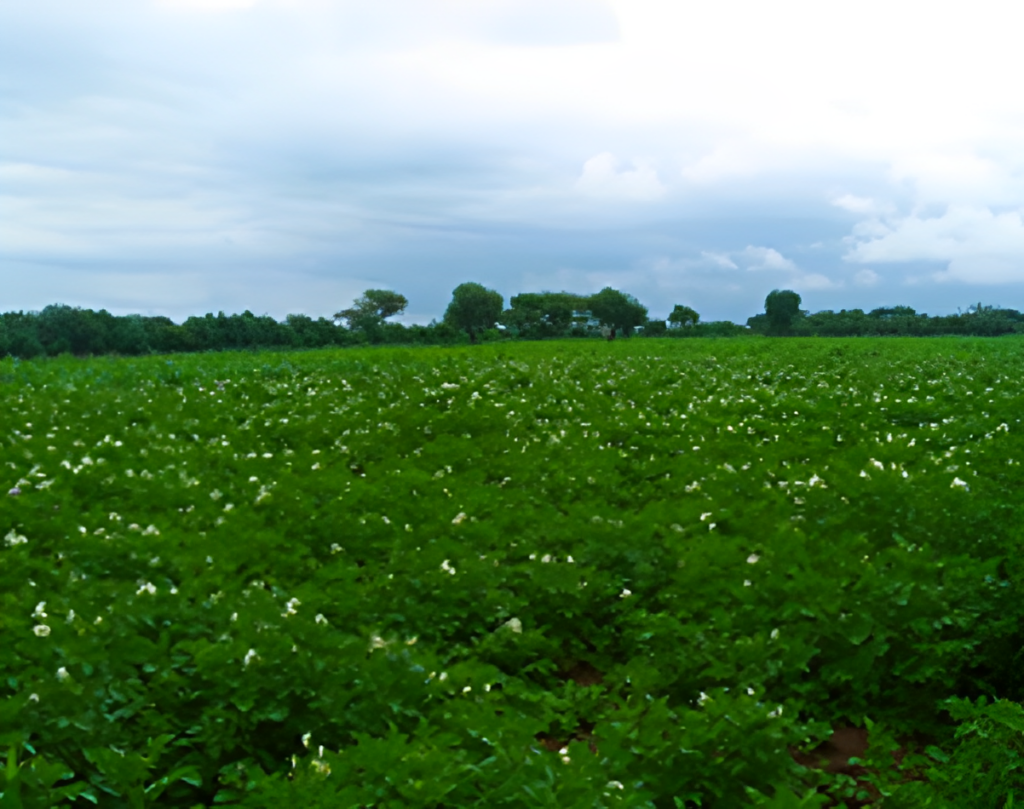In recent years, Ethiopia has faced formidable challenges, grappling with prolonged droughts and ongoing conflicts that have inflicted severe food insecurity, malnutrition, and economic disruptions on its communities. However, a beacon of hope has emerged through the efforts of the International Potato Center (CIP) and its local partners. Since 2015, we have been implementing emergency response projects to combat these crises, offering a lifeline to affected households by introducing resilient and nutrient-rich potato and sweetpotato varieties alongside innovative crop management technologies. The impact of these interventions has been nothing short of remarkable, benefiting over 107,300 households across 114 districts in four regional states. Here we discuss the strategies, achievements, and challenges that have shaped this transformative journey while drawing lessons for the future.
The road to resilience: Strategies that work
A foundational cornerstone of CIP’s approach has been conducting rigorous needs assessments in conjunction with local partners. This step allows for a profound understanding of the crises’ ramifications on the communities, paving the way for the identification of effective interventions that enhance food and nutrition security and facilitate the transition to self-reliance. Central to these interventions is the careful selection of appropriate crops, with potato and sweetpotato emerging as ideal choices for their adaptability and nutritional value. Beyond merely providing seeds, the projects focused on empowering local institutions and equipping communities with the necessary skills to harness the potential of these crops optimally. By enhancing seed systems and extension capacities within the targeted areas, the projects aimed to ensure sustainability and lasting impact.
Celebrating triumphs: The fruits of labor
The implementation of CIP-led interventions has borne fruit in establishing decentralized seed multiplication and distribution systems nationwide. The dedicated efforts of these initiatives have resulted in the production and supply of over 40 million sweetpotato cuttings and more than 500 tons of potato seed annually. As a testament to the impact of these interventions, farmers have achieved harvests two to three times higher than the national average for potato and sweetpotato crops. Such surplus food production has served as a vital lifeline for families, supporting a family of five for four to five months while ensuring adequate vitamin A intake for children under two.
Moreover, the drive for seed conservation has yielded remarkable outcomes. Farmers have judiciously saved over 27% of potato tubers from the initial harvest, empowering them to plant more extensive fields in subsequent seasons. Similarly, communities targeted by sweetpotato technologies have embraced the Triple S method, a prudent technique of storing sweetpotato roots in sand during the prolonged dry season, which after sprouting can be planted in seed beds to provide timely planting material. As a result, they can conserve planting materials effectively and tackle the challenges posed by climate change on staple crop production.
Empowering Communities: The Technological Edge
Technological innovations have played a pivotal role in supporting communities in crisis. Diffused Light Storage (DLS) technology has emerged as a promising solution to encourage collective potato tuber storage, enabling farmers to select and manage high-quality seed for their own use and local market supply. Small-scale irrigation systems, such as water harvesting ponds, have been constructed to conserve water during extended dry months, facilitating the preservation of sweetpotato planting materials. Furthermore, adopting the Triple S method in drought-prone areas, where access to irrigation is limited, has proven highly effective in preserving sweetpotato planting materials.
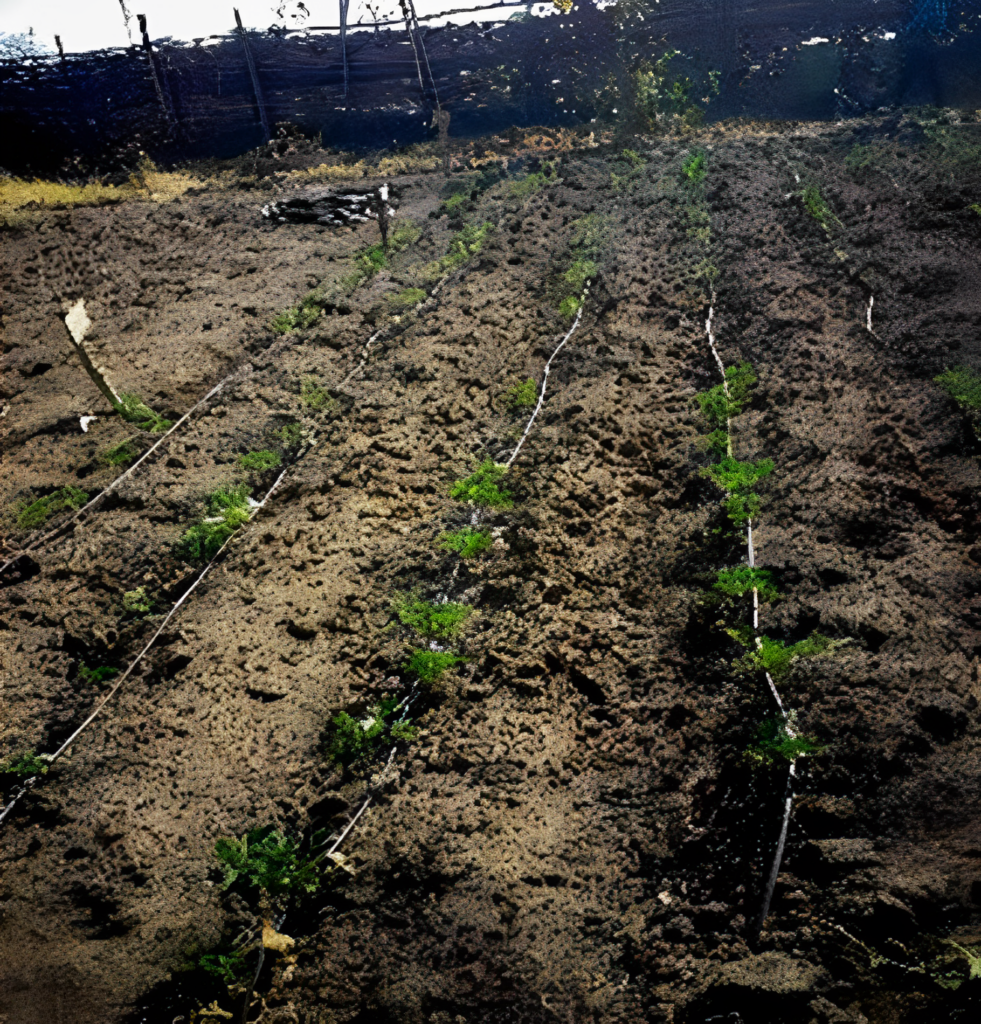

Figure 4: Water harvesting pond and drip irrigation units. Photo credit: M. Yeshitella


Figure 5: Triple S method of vine conservation (left) and beneficiary farmers demonstrate setting up Triple S root storage, Shalla district, Oromia (right). Photo credit: CIP Ethiopia
Nurturing nutrition and health: A holistic approach
Beyond food security, the projects have recognized the importance of nutrition and health in building resilient communities. Technical training and cooking demonstrations have been offered to empower households in effectively utilizing orange-fleshed sweetpotato (OFSP), to support the nutritional needs of infants and young children. Additionally, distributing healthy baby toolkits to pregnant and nursing mothers has contributed significantly to increasing meal frequency with appropriate quantities and consistency of complementary foods for infants and children of different ages.
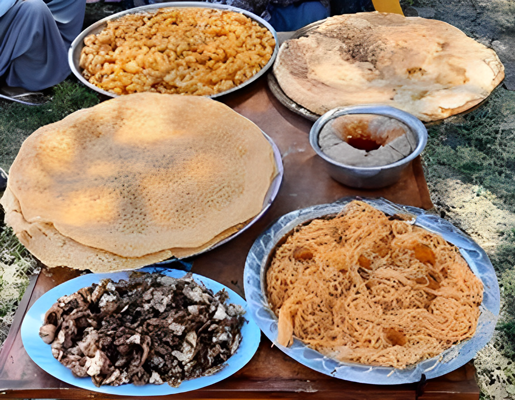
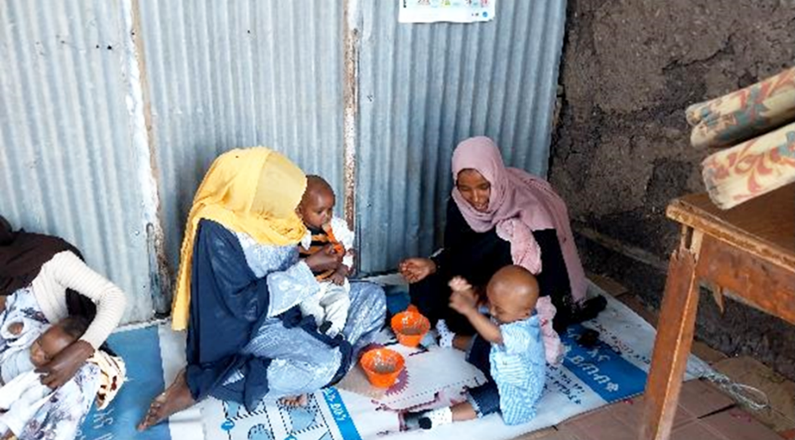
Figure 6: OFSP incorporated local food (left) and Healthy Baby toolkit demonstration in Kalu district of Amhara region. Photo credit: CIP Ethiopia
Challenges on the path to progress
While the accomplishments have been momentous, the journey has not been without its challenges. Security issues arising from conflicts and political instability have impeded project operations and staff mobility. Nonetheless, through careful risk assessment and management, the projects have navigated these obstacles, ensuring the safety of staff and the continuity of project implementation.
Lessons for the future
The successes of these interventions offer valuable lessons for the future. The resilience of potato and sweetpotato crops in drought and conflict-affected areas highlights the potential of diversifying cropping systems. Strengthening seed systems for vegetatively propagated crops emerges as a crucial strategy in mitigating the effects of crises, reducing the need for emergency seed aid. Timely distribution of planting materials remains pivotal for enhancing food and nutrition security in regions with limited rain windows. Furthermore, cultivating potato and sweetpotato presents an income-generating opportunity for vulnerable households, bolstering their livelihoods amidst adversity.
The journey of accelerated recovery from food insecurity and malnutrition in Ethiopia’s drought and conflict-affected areas, propelled by potato and sweetpotato technology interventions, serves as an inspiring tale of hope and progress. As we look ahead, the lessons learned from this transformative endeavor will undoubtedly guide similar initiatives, fostering sustainable development and empowering communities worldwide to embrace resilience in the face of adversity.
Disclaimer and acknowledgments This activity was made possible through support provided by the U.S. Agency for International Development, under the terms of Award No. AID-BFS-G-11-00002 and 720BHA21IO00075. The opinions expressed in this event are those of the authors and do not necessarily reflect the views of the US Agency for International Development.

